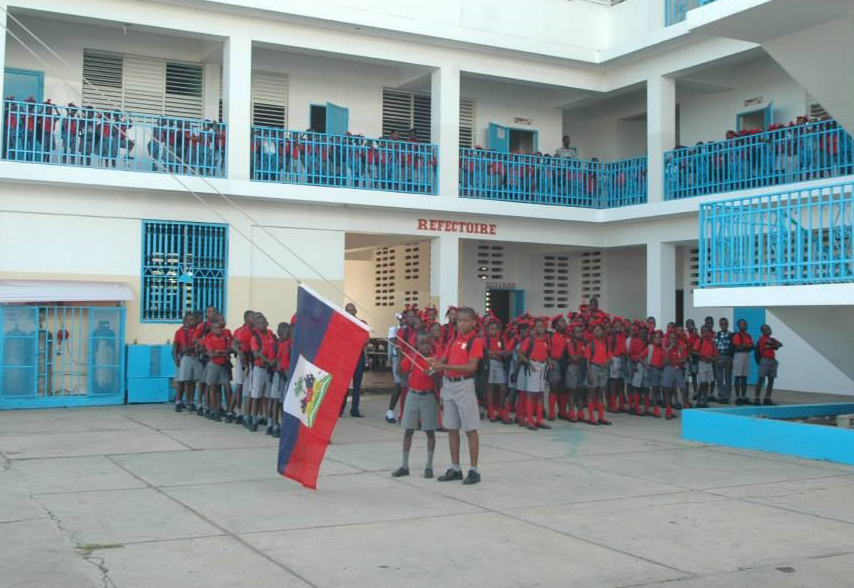Textbooks, addressing U.S. high school public relations, identify school marching bands as a positive engagement between schools and their communities. Much in the way test scores signify a school’s academic success, musical performance can symbolize a school’s strength.
In a Haitian community where Kevin Shorner-Johnson immersed himself in research and culture, the school’s marching band is “a multifaceted tool for visible, legitimate and beautiful justice,” Shorner-Johnson wrote in a paper published by the International Journal of Music Education in September 2016.
The Elizabethtown College associate professor of music education collected data, observed communities and conducted interviews about how music in Haiti, specifically the marching band of Ecole Saint-Barthlemy, came to represent solidarity and community leadership within the context of educational and health care challenges of Northern Haiti.
Ecole Saint-Barthlemy, he said, is among the first Haitian schools to include music instruction in its curriculum.
Shorner-Johnson’s ongoing study, funded by a first-year grant in 2010, honors the College’s heritage of peacebuilding by considering new forms of justice, he said.
… participation in parades embedded the school in a position of leadership …”
In his study, participants identified the act of becoming visible through music as empowered justice. This was in contrast to the public relations efforts of many aid organizations that depict starving Haitian children, Shorner-Johnson said. These representations depict “humans as third-world, backward and unable to care for themselves. It is an unjust one-dimensional representation.” Not only do musical performances make the children visible to one other and their community, they represent their humanness and achievement.
Musical experiences for the École St. Barthélémy students have been powerful, Shorner-Johnson said of the Haitian youth he interviewed. They spoke of beauty, pride and honor, deeply important in a country with a rich musical culture. As part of the marching band, participating students were no longer defined by their economic circumstance but by their talent and musical ability.
School leaders believed that all children have innate musical talent — “music and rhythm in their blood” — and this became the moral calling to provide all children with opportunities for talent development. Today, the band and a brand new orchestra have become an integral part of morning flag raising, national anthem, school pride celebrations and prayer rituals.
The marching band’s “participation in parades embedded the school in a position of leadership …,” Shorner-Johnson wrote. As a matter of fact, this leadership role took on a unique and powerful application when the cholera epidemic struck Haiti following the 2010 earthquake. The marching band paraded through towns, leading health workers who educated communities about the importance of hygiene, said Shorner-Johnson. Because the band brought the information (via the health workers), it was deemed a form of community leadership. People came out to hear the band, then took part in the educational initiatives.
In addition to visibility, Shorner-Johnson said, the marching band brings the added benefit of school retention. Students who wished to remain in the band worked harder for top grades and remained in school. In 2012, the top three students in northeast Haiti came from École St. Barthélémy, and the school’s success rate at the national exams is more than 90 percent.


